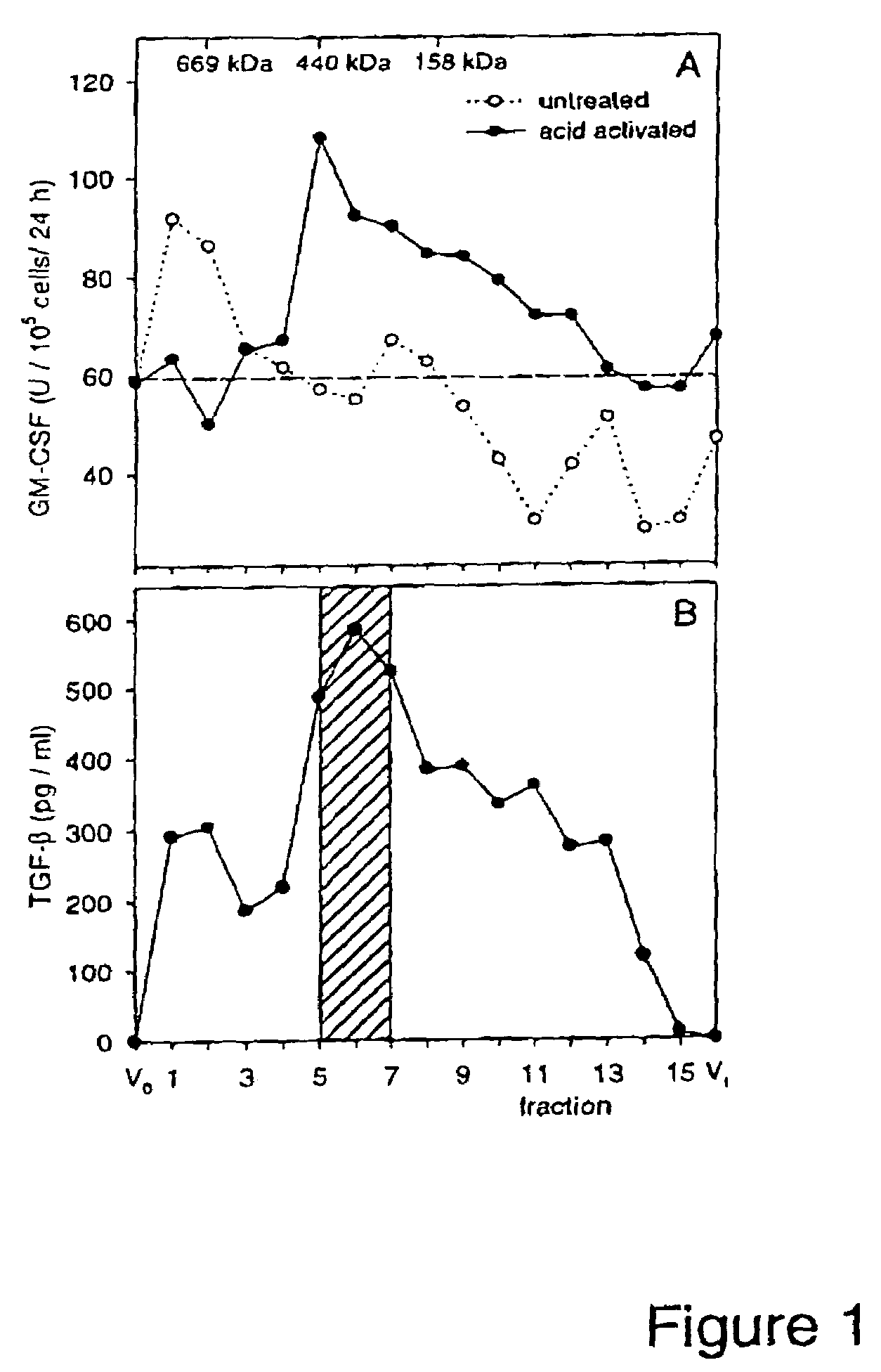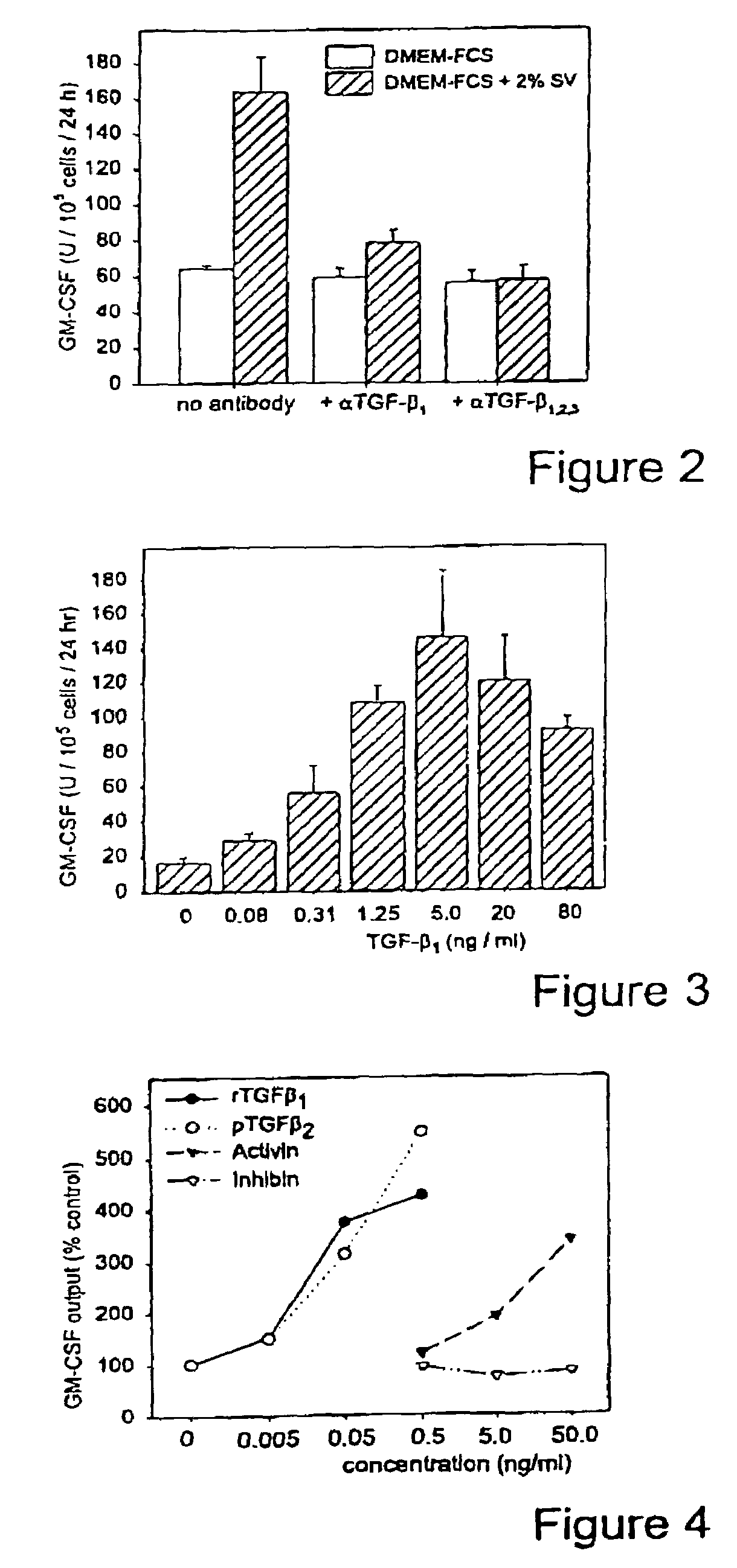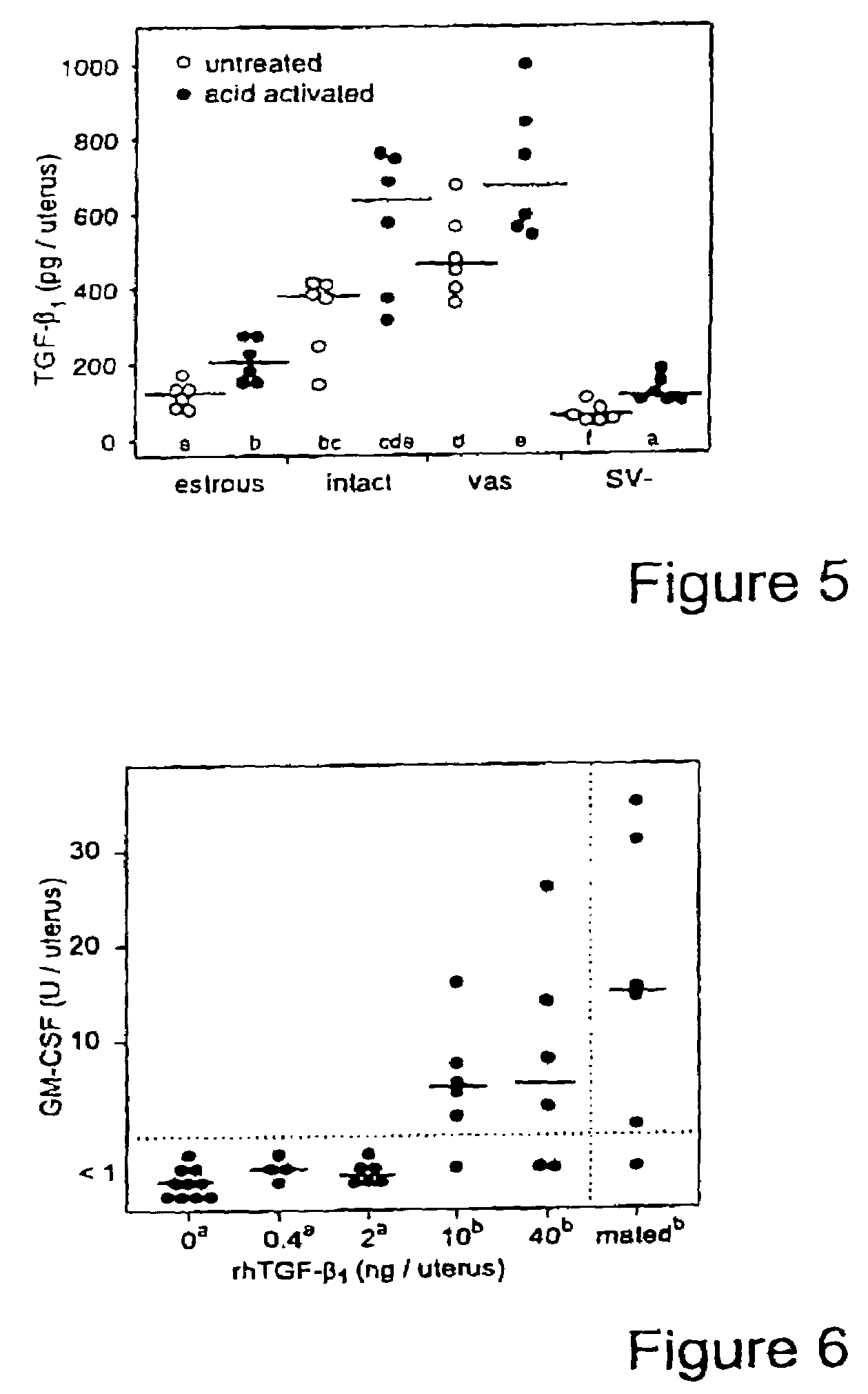Treatment and diagnosis of infertility using TGFβ or activin
a technology of infertility and activin, which is applied in the field of diagnosis of infertility using tgfbeta or activin, can solve the problems of high attendant social cost, large personal distress, and the inability to diagnose and treat the condition, and achieve the effect of alleviating reducing the symptoms of the infertility condition
- Summary
- Abstract
- Description
- Claims
- Application Information
AI Technical Summary
Benefits of technology
Problems solved by technology
Method used
Image
Examples
example 1
Seminal TGFβ Initiates the Post Mating Inflammatory Response in Mice and Humans
[0077]The cytokines GM-CSF, produced by the uterine epithelium following contact with seminal vesicle secretions, is through to be pivotal to the generation of material tolerance since it is largely responsible for initiating the leukocyte influx into the female reproductive tract after mating and for increasing the antigen presenting capacity of these cells.
[0078]Seminal vesicle fluid was fractionated by size exclusion chromatography in order to identify GM-CSF-stimulating activity. Two fractions were identified; a high molecular weight (650 kDA) proteinaceous moiety and a intermediate molecular weight, more heterogenous moiety eluting between 150–440 kDA (10.62). The latter moiety was identified as TGFβ1, on the basis of findings that its GM-CSF stimulating activity was enhanced by acid activation, that TGFβ1, immunoactivity and bioactivity co-eluted in the same fraction, and that anti-TGFβ1, neutralizi...
example 2
Seminal Vesicle Fluid Modulates Maternal Reproductive Performance and the Maternal Immune Response to Paternal Antigens
[0084]Previously, exposure to semen at mating was found to cause an intense but transient inflammatory response, and factors in seminal plasma derived from the seminal vescile were implicated in this response. In studies in mice, the inventors have identified seminal vesicle fluid as a pivotal determinant in optimal embryo development and implantation. Furthermore, exposure to semen at mating has been shown to have an important role in inducing maternal tolerance prior to implantation, and factors present in seminal plasma have been identified as necessary for induction of this state, suggesting that the beneficial effect of seminal plasma on pregnancy outcome may at least in part be due to the immune deviating effects of this fluid.
[0085]To test the importance of exposure to seminal vesicle fluid for pregnancy success, Balb / c F1 females were mated with CBA males fr...
example 3
Seminal TGFβ is an Immune Deviating Agent
[0091]to assess the effect of TGFβ on induction of Th1 and Th2 immune responses against CBA sperm antigens, Balb / c F1 female mice were immunised by intra-uterine infusion with CBA sperm, in the presence or absence of rTGFβ, on two occasions separated by 4 weeks. Development of Th1 anti-sperm immunity was assessed two weeks later by measuring the DTH response to a subcutaneous sperm antigen challenge, and by measuring serum content of anti-sperm reactive immunoglobulin of the IgG2b subclass. Whereas sperm administered alone or in the presence of Freunds Complete Adjuvant elicited a strong DTH response and a moderate IgG2b antibody response, immunisation in the presence of TGFβ substantially diminished both of these parameters, and was comparable to the response elicited by natural mating (FIG. 8). In contrast, synthesis of sperm-reactive immunoglobulin of the IgG1 isotype (indicating induction of a Th2 response) occurred to a similar extent in...
PUM
| Property | Measurement | Unit |
|---|---|---|
| time | aaaaa | aaaaa |
| concentration | aaaaa | aaaaa |
| concentration | aaaaa | aaaaa |
Abstract
Description
Claims
Application Information
 Login to view more
Login to view more - R&D Engineer
- R&D Manager
- IP Professional
- Industry Leading Data Capabilities
- Powerful AI technology
- Patent DNA Extraction
Browse by: Latest US Patents, China's latest patents, Technical Efficacy Thesaurus, Application Domain, Technology Topic.
© 2024 PatSnap. All rights reserved.Legal|Privacy policy|Modern Slavery Act Transparency Statement|Sitemap



